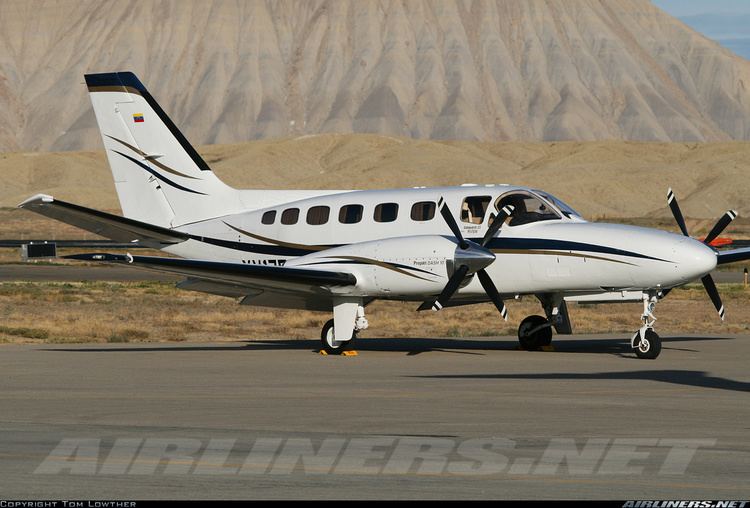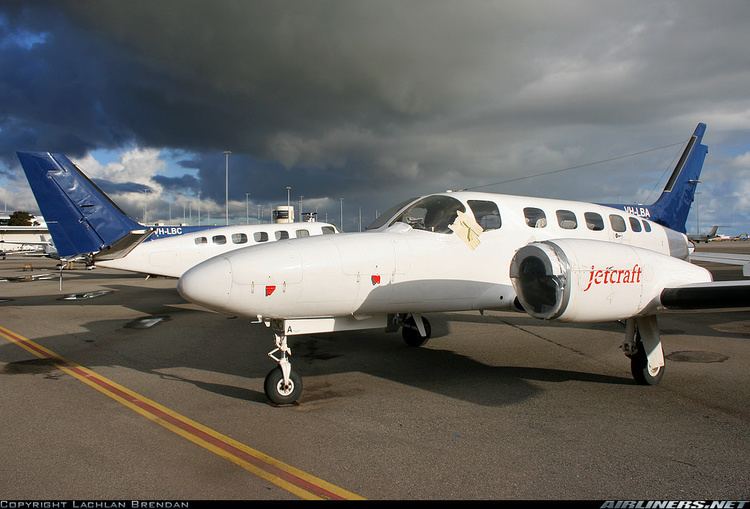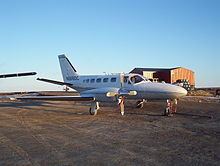Cruise speed 480 km/h Range 4,064 km Length 12 m Engine type Garrett TPE331 | Wingspan 15 m Top speed 550 km/h Weight 2,577 kg | |
Cessna 441 conquest ii takeoff
The Cessna 441 Conquest II is the first turboprop powered aircraft designed by Cessna and was meant to fill the gap between their jets and piston-engined aircraft. It was developed in November 1974, with the first aircraft delivered in September 1977. It is a pressurized, 8–9 passenger turbine development of the Cessna 404 Titan.
Contents
- Cessna 441 conquest ii takeoff
- Cessna 441 conquest ii full panel upgrade
- Design and development
- Modifications
- Operational use
- Specifications Conquest II
- References

Cessna 441 conquest ii full panel upgrade
Design and development

The aircraft has retractable tricycle landing gear and on takeoff has a ground roll of 1,785 ft (544 m). The high aspect ratio wings use bonded construction techniques.

The Conquest is powered by two Garrett TPE331 turboprops powering two four-bladed McCauley propellers. A 441 with Pratt & Whitney Canada PT6A-112 turboprops was flown in 1986 but did not enter production.

The Cessna 441 is limited to 22,500 hours of air time by a Cessna Supplementary Inspection Document (SID). This life-limit SID is mandatory in the USA for air carriers operating the aircraft but is advisory only for private operators.
The ICAO designator for the Cessna Conquest as used in flight plans is C441.
A smaller aircraft was marketed as the Cessna 425 Conquest I, itself a turbine development of the Cessna 421.
Modifications

The majority of Cessna 441s have been modified by installing Garrett TPE331-10 engines in place of the earlier versions of this same engine that it was delivered with. This modification reduces maintenance costs while increasing horsepower, service ceiling, fuel efficiency and range. Cessna 441s with this conversion tend to have higher resale values than aircraft that have not been converted.
Converting from the standard three blade propellers to smaller diameter Hartzell four blade propellers results in a climb rate improved by 200 fpm (1.01 m/s) and a 5 kn (9 km/h) increase in cruise speed as well as reducing cabin noise and improving ground clearance.
Operational use
The Conquest is operated by corporate owners, air charter operators and previously by the Royal Flying Doctor Service in Australia. Examples of the type have been exported to many countries including Austria, Australia, Canada, Ecuador, Finland, Germany, Iceland, Mexico, Norway, Peru, South Africa, Sweden and the United Kingdom. Many remain in service.
Specifications (Conquest II)
Data from Jane's All The World's Aircraft 1982–83
General characteristics
Performance
Avionics
